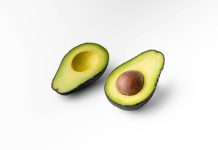
Scientists at UC Riverside have discovered a new, nontoxic, and cost-effective method to lure and kill termites using a pleasant-smelling chemical called pinene.
This groundbreaking approach is detailed in the Journal of Economic Entomology and offers a safer alternative to traditional fumigation methods.
Pinene, a chemical released by forest trees, attracts western drywood termites because it smells like their food.
By combining pinene with an insecticide and injecting it into wood, researchers found a significant increase in termite mortality rates.
“We saw significant differences in the death rates using insecticide alone versus the insecticide plus pinene,” said Dong-Hwan Choe, the UCR entomologist who led the study.
“Without pinene, we got about 70% mortality. When we added it in, it was over 95%.”
Western drywood termites, native to North America, play an important role in the environment by breaking down dead wood.
However, they often mistake the wood in homes for dead trees, leading to infestations. This is a common problem in warmer areas like California, Florida, Canada, and Mexico.
Traditionally, fumigation is the most common method to control drywood termites.
This involves covering homes with tents and filling them with a gas called sulfuryl fluoride to kill the termites.
However, this method has several drawbacks: it is expensive, does not offer long-term protection, and the gas is a greenhouse gas that is toxic to humans.
“Even though fumigation is very thorough, a home can be infested again soon after it’s completed,” Choe explained. “Some people fumigate every three to five years because it doesn’t protect structures from future infestations.”
Localized injection offers a more targeted approach. This involves drilling holes into infested wood and injecting poison directly into the termite nests.
This method uses fewer chemicals, is less expensive, and can protect the treated wood from future infestations.
However, it can be challenging to locate the termites’ exact hiding spots, as this method relies on the insects coming into contact with the poison.
By using pinene as an attractant, this new method eliminates the need to hunt for termites. “Even at low concentrations, pinene is good at attracting termites from a distance,” Choe said. “We don’t think it’s functioning as a pheromone.
We think the scent is more associated with their food. Smells nice… dinner time! That’s the concept that we had in mind.”
The insecticide used in the study, fipronil, is also used to control ant infestations. While it can be toxic to aquatic insects and pollinators, the risk of environmental contamination is low since it is injected directly into the wood.
Choe’s laboratory focuses on studying the chemical communication systems of urban insect pests to develop effective pest management strategies.
“Our study shows that if you understand insect behavior better, it’s interesting by itself,” Choe said. “Then there are also important implications for more effective pest management, so we can use fewer chemicals without compromising efficiency.”
This new method of using pinene and localized injection provides a promising, greener solution for termite control, protecting homes while reducing the environmental impact.



